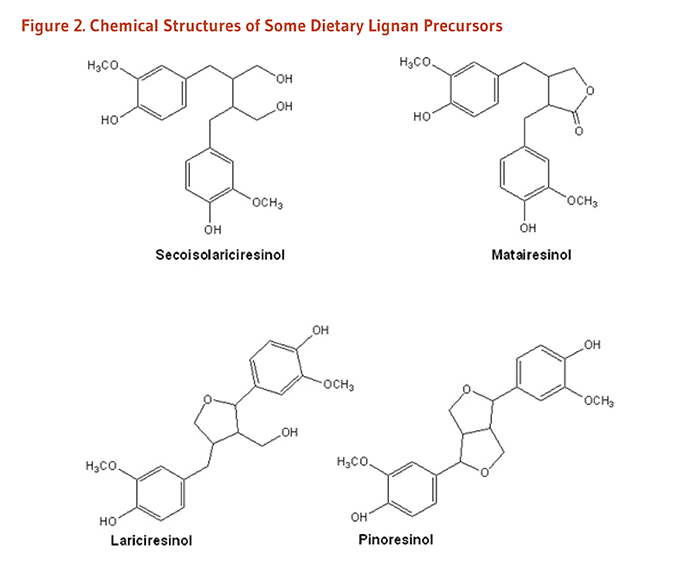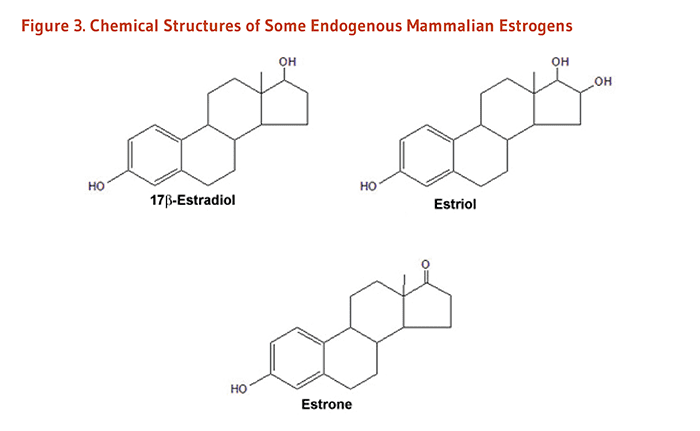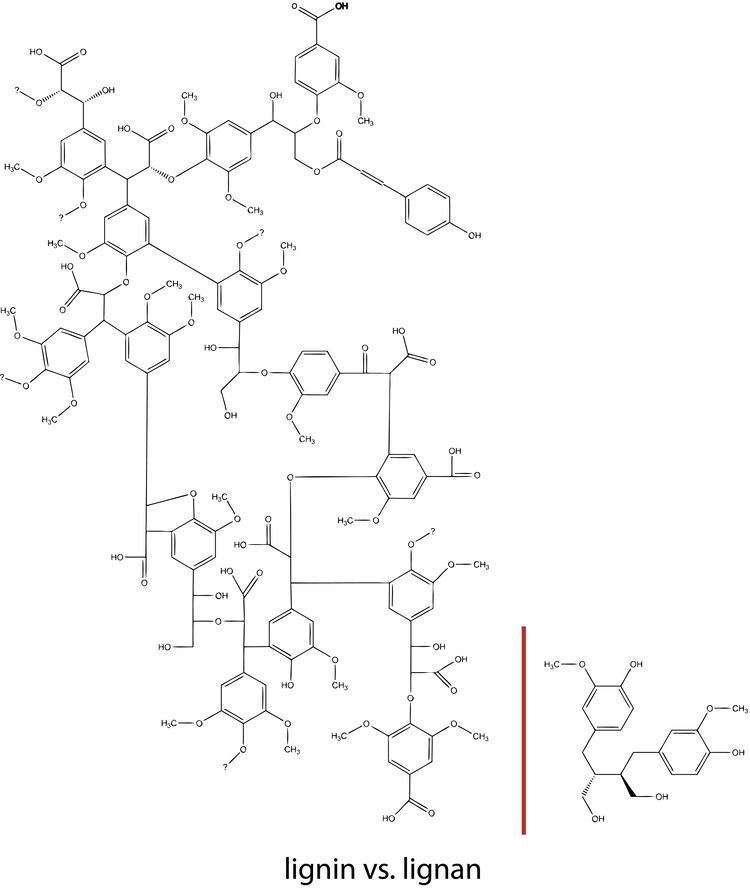 | ||
Flax hull lignans
The lignans are a large group of chemical compounds found in plants. Some examples of lignans are pinoresinol, podophyllotoxin, and steganacin.
Contents

Etymology
From lign (Latin, linear) + an.
Technical Definition

Plant lignans are polyphenolic substances derived from phenylalanine via dimerization of substituted cinnamic alcohols (see cinnamic acid), known as monolignols, to a dibenzylbutane skeleton 2. This reaction is catalysed by oxidative enzymes and is often controlled by dirigent proteins.
Structure

Many natural products, known as phenylpropanoids, are built up of C6C3 units (a propylbenzene skeleton 1) derived from cinnamyl units just as terpene chemistry builds on isoprene units. Structure 3 is a neolignan, a structure formed by joining the two propylbenzene residues at other than the β-carbon atom of the propyl side chain.
As diet

When a part of the human diet, some plant lignans are metabolized by intestinal bacteria to mammalian lignans enterodiol (1) and enterolactone (2). Lignans that can be metabolized to mammalian lignans are pinoresinol, lariciresinol, secoisolariciresinol, matairesinol, hydroxymatairesinol, syringaresinol and sesamin. Lignans are one of the major classes of phytoestrogens, which are estrogen-like chemicals and also act as antioxidants. The other classes of phytoestrogens are isoflavones and coumestans.
Pharmacology

Lignans serve an antioxidant role in the plant's defenses against biotic and abiotic factors, and have shown anti-inflammatory and antioxidant activity in basic research models of human diseases.

Lignans may also have anticarcinogenic activities. Some epidemiological studies have shown that lignan exposure associates with lower risk of breast cancer, nevertheless the inverse association with an array of other cancers (except glioma) is far more correlated in scientific literature.
